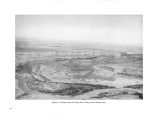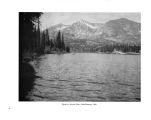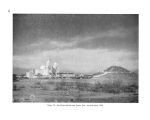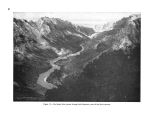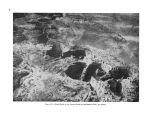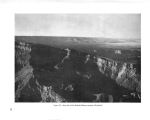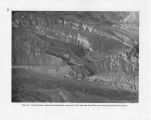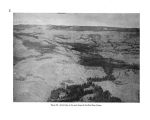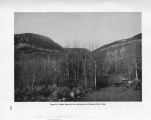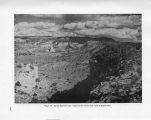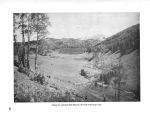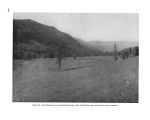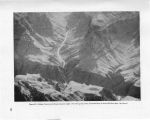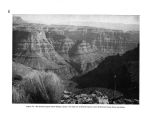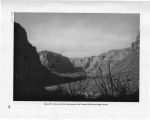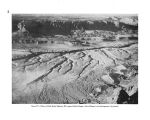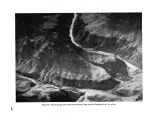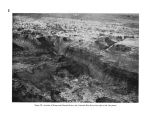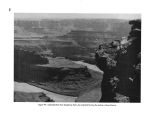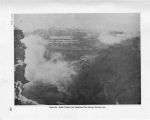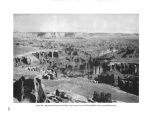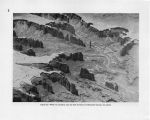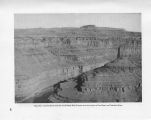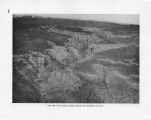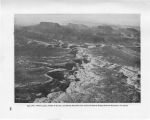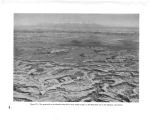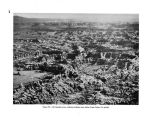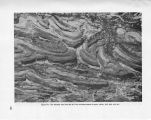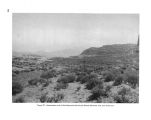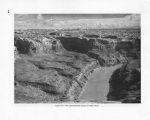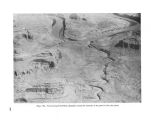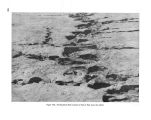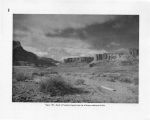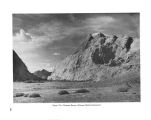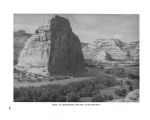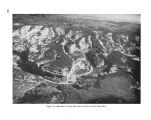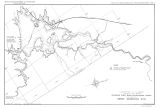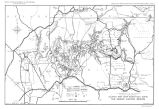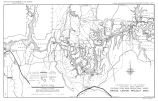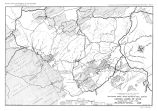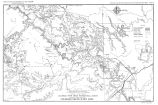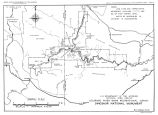| OCR Text |
Show miles of bare, pink, red, buff, and white sandstone; down canyons 2,000 feet deep; and up buttes 1,000 feet high. All is yours- 20,000 square miles or more- and yet, to approach on foot or horseback even one of the nearby canyons is a giant's task. It is a land of the unusual in color and form, of great natural bridges, monuments, spires, intricately twisting canyons, mammoth terraces with sheer walls a thousand or more feet high, and rock forms that resemble castles and cathedrals. But the most impressive feature is that of space. Not the monotonous space of the Great Plains, but dramatic, colorful space accentuated by these varied land forms and the high mountains to the east and west and the broad sweeps of unfenced range. From hjgh points the region appears as a great, deeply eroded plain from which rise three beautiful mountain masses. The LaSals to the northeast rise to 13,089 feet above sea level; the Abajos in the east central part rise to 11,445 feet; and the Henrys in the west central part rise to 11,485 feet. To the southwest, the Kaiparowits Plateau stretches southeast from the high plateaus for 50 miles, at the 7,000- foot level, as far as Navajo Mountain ( elevation 10,416 feet) which stands alone on the south side of the Colorado River. East of Navajo Mountain, the monuments of Monument Valley standing against the sky may be seen from great distances. To the north the Book Cliffs, with the Roan Cliffs above, form the skyline. To the northwest the San Rafael Swell, and beyond and above it the Wasatch and Fish Lake Plateaus, end the view. West of the Henrys, Boulder Mountain and the Aquarius Plateau, elevations 10,000 to 12,250 feet, respectively, blend into the western end of the Kaiparowits Plateau to form the distant skyline. To the south and southeast is a horizon less definite and broken by great mesas and mountain peaks. From the south end of Elk Ridge, which lies to the west of the Abajo Mountains, may be seen the Carrizo Mountains, Pastora and Zilbetod Peaks just south of the four corners, and Ute Peak southwest of Cortez, Colo. East of the Abajo Mountains, the great sage plain stretches on and on to the snow- covered peaks of the La Plata and San Miguel Mountains in Colorado. East of the La Sal Mountains is a jumble of canyons and mesas terminated by the Uncompahgre Plateau. Down through the center of all this, majestically flows the Colorado River in its great canyon that starts just below the mouth of the Dolores River and continues almost unbroken to the Grand Wash Cliffs, a distance of 590 miles, the first 285 miles of which are in Utah. From Moab to the junction with Green River, the Colorado flows along a fairly smooth bed, easily navigable by small boats. From the junction to Mille Crag Bend are 40 miles of some of the roughest water of the entire canyon section of the river, hence, Powell's name for this section- Cataract Canyon. From Mille Crag Bend to Lees Ferry the river flows quietly between monumental walls. The beauty of the scenery and quiet waters suggested to Powell the name Glen Canyon. Because of the depth of the canyon, little is seen from the river, except the immediate canyon walls. Powell and other river adventurers had to be continually scaling the canyon walls in order to get an idea of the country they were passing through. From the tops of the river canyon walls the scene is quite different from that obtained from the higher observation points on the plateau. For example, standing on the rim of the river canyon 1,200 feet directly above the junction of the Green and the Colorado, the great mountain masses and the plains are not visible; instead, there are the thousands of little mountains, buttes, spires, domeSj and walls formed by the erosion of the great plain that forms the skyline. You are down in another world surrounded by a complicated jumble of pink, buff, and red sandstone formations, fantastic and beautiful. To the west, north, and east above the general level of this land of standing rocks, two great irregularly shaped terraces rise about 2,000 feet. Here and there, rising from the dark red lower terrace, are huge buttes and smaller walls and spires of the same color. The face of the upper terrace is sheer and of an orange- brown tone, which has given it the name, Orange Cliffs. To the south, on the east side of the river, an intricate system of parallel faults and erosion have created the unique Needles area which blends into formations similar to the Standing Rocks. These in turn build up gradually to Elk Ridge which runs generally north and south at an average elevation of 8,600 feet. Horse Mountain, the high point at the north end of Elk Ridge, rises 5,587 feet above the Colorado River to an elevation of 9,202 feet above sea level. Below Cataract Canyon the scene changes; great 151 |




























